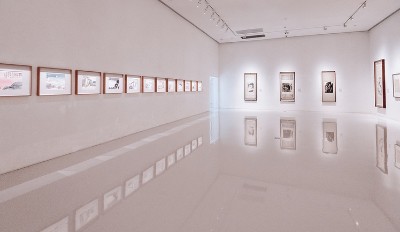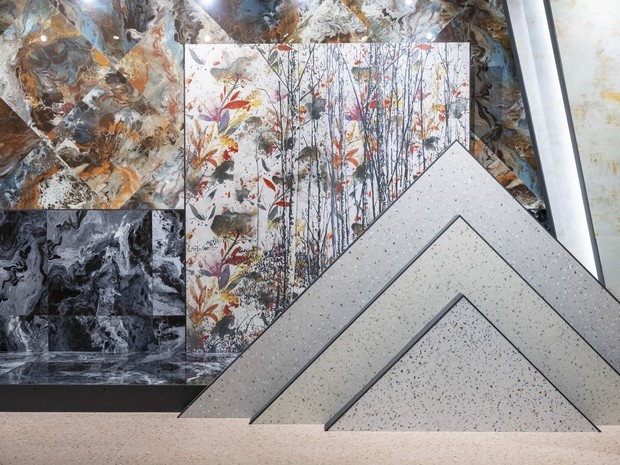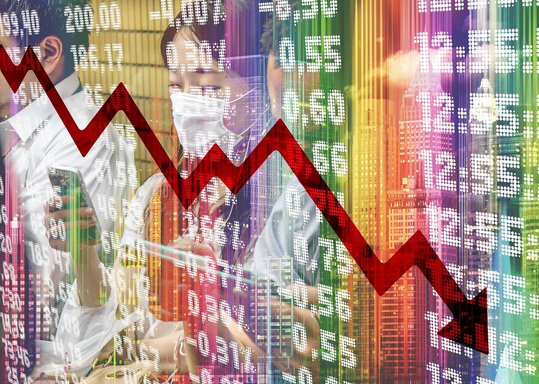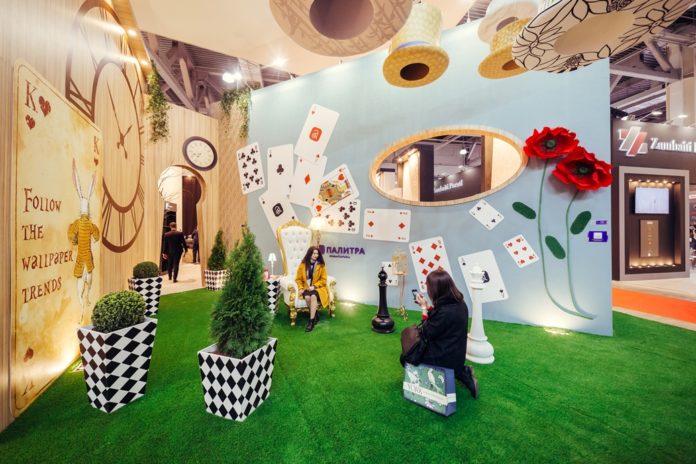One of the largest banks in the U.S. shared his vision for the future of the art market
In the last week of June, Bank of America, which not only has a corporate art collection but also provides art banking services for its clients, released its own mini-study. In a simple and accessible form, the bank’s analysts divided the current crisis into phases and made predictions about the behavior of buyers and sellers in each phase. We offer the main results of work to readers AI with our comments:
As you know, the art market lags behind the stock market and the global economy as a whole: the fall and growth in it come with a delay of 6-12 months. Over the last 30 years, the art market has survived three major shocks: the recession of 1990-1991, the dot-com bubble of 2001, combined with the terrorist attacks of September 11, and the financial crisis of 2008-2009. The art market recovery from the last two crises was V-shaped (rapid growth after a rapid decline. – AI.), while the effects of the 1990 recession were felt for over 10 years and the recovery was smooth, U-shaped. Analysts at Bank of America expect that the art market after COVID-19 will avoid a steep collapse and continue development consisting of three phases, called “exit”, “adjustment” and “recovery”.
Exit (present – fall 2020)
 As quarantine restrictions loosen, local economies begin to move and the world restarts global business interactions again, Bank of America expects the art market supply (the quantity and quality of works that sellers offer for sale.) to be limited until there is more economic clarity. At this point, don’t expect big discounts from sellers: they are interested in stabilizing the market by holding down average prices for artists. During the last crisis, from 2008 to 2009, art sales dropped 40%. This was not because of a decrease in price dynamics, but because sellers (primarily auction houses.) refused to take art for sale at a discount that suited the owners, and thus deprived buyers of the opportunity to make profitable purchases. This approach will continue through the summer of 2020, but other factors will add to the desire to limit supply: logistics companies are frozen in anticipation of clarity on the international transport of art, and auction houses, art fairs and galleries are switching to online sales channels to ensure a minimum income. The few works that do go on public sale are likely to meet surprisingly steady demand as stimulative monetary policies in the developed world and bored, quarantined international collectors continue to buy. Summer auctions are likely to have limited supply, previously negotiated guarantees, and stable demand: in sum, this should support a stable price level.
As quarantine restrictions loosen, local economies begin to move and the world restarts global business interactions again, Bank of America expects the art market supply (the quantity and quality of works that sellers offer for sale.) to be limited until there is more economic clarity. At this point, don’t expect big discounts from sellers: they are interested in stabilizing the market by holding down average prices for artists. During the last crisis, from 2008 to 2009, art sales dropped 40%. This was not because of a decrease in price dynamics, but because sellers (primarily auction houses.) refused to take art for sale at a discount that suited the owners, and thus deprived buyers of the opportunity to make profitable purchases. This approach will continue through the summer of 2020, but other factors will add to the desire to limit supply: logistics companies are frozen in anticipation of clarity on the international transport of art, and auction houses, art fairs and galleries are switching to online sales channels to ensure a minimum income. The few works that do go on public sale are likely to meet surprisingly steady demand as stimulative monetary policies in the developed world and bored, quarantined international collectors continue to buy. Summer auctions are likely to have limited supply, previously negotiated guarantees, and stable demand: in sum, this should support a stable price level.
Adjustment (Fall 2020 – Spring 2021)
It is expected that starting in the fall, the number of works entering the market will increase sharply (also because of the activity of small and medium sellers, who are not part of the regulators, but act chaotically. – AI.) and in some segments will outpace demand – in the short run, this will lead to lower prices. Cash-strapped galleries, concerned about falling liquidity, private dealers and consignors, who will be forced psychologically to accept lower prices, will negatively impact the art market. Demand, which depends primarily on the mood of collectors, will ultimately be determined by medical restrictions, the level of the stock market and the liquidity of purchases. Analysts expect price formation to be slightly calibrated during this period: the value of rare works and masterpieces will remain stable, but the price dynamics of mid-level works and the primary market for contemporary art will likely be negative. In short, Phase 2 is a time for finding quality works and making good deals.
Recovery (Spring 2021 and beyond)
 The deflationary (i.e., declining average price level.) period in the art market should end with the strengthening of private capital, the normalization of the corporate profit cycle, and the recovery of general economic sentiment. As the new period begins, world economies will face inflation as a financial response to the effects of the pandemic. This process should bring capital back into the art market since the supply “from art” is inherently limited and therefore not subject to inflation – in particular, the Federal Reserve cannot overprint Picasso paintings like U.S. dollars. The primary market and young contemporary artists will lag behind the more well-known and investment-attractive artists in growth rates. Museums will have to tighten their belts for a while and the only dream of adding to their collections. Mid-level galleries will take years to fully recover, with some possibly closing. Well-developed top galleries will only get stronger against this background, and the number of art fairs will shrink. Bank of America predicts the development of virtual marketplaces, online auctions, and digital channels of communication and communication with buyers, but at the end of Phase 3, the art market expects a “digital redistribution”: some collectors will return to social and “tactile” shopping in physical spaces, while others will remain adept at online transactions and communications.
The deflationary (i.e., declining average price level.) period in the art market should end with the strengthening of private capital, the normalization of the corporate profit cycle, and the recovery of general economic sentiment. As the new period begins, world economies will face inflation as a financial response to the effects of the pandemic. This process should bring capital back into the art market since the supply “from art” is inherently limited and therefore not subject to inflation – in particular, the Federal Reserve cannot overprint Picasso paintings like U.S. dollars. The primary market and young contemporary artists will lag behind the more well-known and investment-attractive artists in growth rates. Museums will have to tighten their belts for a while and the only dream of adding to their collections. Mid-level galleries will take years to fully recover, with some possibly closing. Well-developed top galleries will only get stronger against this background, and the number of art fairs will shrink. Bank of America predicts the development of virtual marketplaces, online auctions, and digital channels of communication and communication with buyers, but at the end of Phase 3, the art market expects a “digital redistribution”: some collectors will return to social and “tactile” shopping in physical spaces, while others will remain adept at online transactions and communications.
Bank of America identified three major trends in the current art market crisis.
1. The art market system adapts quickly
The art market infrastructure is in a state of the dramatic decline in the number of players. Galleries, auction houses, and museums have cut or laid off employees and are now deciding how to operate under the new conditions. We are expecting a new wave of consolidation (merging small players into groups or merging with top market players), as well as the closing of business – especially the galleries, which have lost up to 80% of their income (and those are the majority in the world today). The American Alliance of Museums (AAM) estimates that over 30% of U.S. museums will not have the resources to open. Bank of America expects the fastest and most powerful innovation cycle in the history of the art market in terms of changing business models, mergers and adaptation of modern technology. Going forward, this means a more accessible, transparent, yet impersonal and somewhat dull, virtual art world.
2. Changing strategies of auction houses
 Last year, three auction houses-Hindman, Bonhams, and Sotheby’s-changed hands. The battle for market share has led to a revision of auction commissions, and social distancing in 2020 has accelerated the transition of auction houses to new offerings (for example, combining art from different eras in a single auction) and digital sales channels. The “hybrid auction” model (with the auctioneer working in the room and bidders watching online) is expected to be widely used for the foreseeable future. An increase in the number of multi-day open-price auctions, lightning sales and lots sold by auctioneers in private transactions will follow. The role of business alliances in public auctions (Guardian and Christie’s collaboration in China) and in the private sector (Sotheby’s Gallery Network project) will increase. Even now, customers of major auctions have the opportunity to bid not only on art and luxury items, but also on collectibles from the fashion and design sector, and in the future – even on exposed financial and other art services in the form of lots.
Last year, three auction houses-Hindman, Bonhams, and Sotheby’s-changed hands. The battle for market share has led to a revision of auction commissions, and social distancing in 2020 has accelerated the transition of auction houses to new offerings (for example, combining art from different eras in a single auction) and digital sales channels. The “hybrid auction” model (with the auctioneer working in the room and bidders watching online) is expected to be widely used for the foreseeable future. An increase in the number of multi-day open-price auctions, lightning sales and lots sold by auctioneers in private transactions will follow. The role of business alliances in public auctions (Guardian and Christie’s collaboration in China) and in the private sector (Sotheby’s Gallery Network project) will increase. Even now, customers of major auctions have the opportunity to bid not only on art and luxury items, but also on collectibles from the fashion and design sector, and in the future – even on exposed financial and other art services in the form of lots.
3. The rise and correction of the technology market
Social distancing has accelerated the art world’s transition to digital sales and communication channels. We saw the first high-profile project of 2020 in March when Art Basel Hong Kong launched a fully virtual fair (we believe, however, that it started with the Acute Art app with KAWS works). All remaining art fairs are expected to have virtual sales galleries. A Bank of America survey of galleries and private dealers found that virtual sales generate an average of 25% of the sales that physical fairs did in recent years (and they, in turn, accounted for up to 50% of all gallery sales for the year). At the same time, the new format provides greater price transparency, which means it will be easier for collectors to make informed, effective purchasing decisions. Recent online auctions and digital art fairs have been surprisingly effective, with up to 40% of auction bids coming from new bidders and high sales. We may never see a format like the daytime auction again (sales of art in the lower and middle price categories, which will finally settle on the Internet.) As a result, the art market is expected to move into a hybrid world of digital, personal, and live participation as soon as possible.
Table 1. Art market behavior in the three main crisis phases of 2000-2021.
| Категория искусства / Период | Coming out of quarantine Summer 2020 – Fall 2020 |
Correction Fall 2020 – Spring 2021 |
Recovery Spring 2021 and beyond |
|---|---|---|---|
| Masterpieces
(primary and secondary market of unique works) |
Sustained demand met with reluctance to sell/accept works for sale, resulting in low bidding volume but stable prices | Lower interest rates and high liquidity of blue-chip art will keep prices stable with increased trading volume | The masterpiece market will remain untouched |
| Acclaimed artists
(with a history of auction sales and/or represented by a major gallery) |
Surprisingly high demand for online auctions, keeping prices stable thanks to a constant audience | Excess supply due to falling purchasing power will cause prices to fall by 10-30%, as buyers expect discounts | The balance between supply and demand will reduce average prices by 10-15% |
| Primary market (contemporary art without auction sales history) | Very low liquidity, refocusing on other forms of art and sales methods (digital art, share ownership) | Surplus supply due to falling purchasing power and gallery liquidation/consolidation will lead to a 20-50% drop in prices | Most galleries and their artists must start over with lower prices, some careers and businesses will never recover |
The Bank of America report notes the experience of the 2008-2009 financial crisis can help with predictions and solutions in the current situation. Art and antiques sales fell from $62 billion in 2008 to $39.5 billion in 2009, but by 2010 had returned to pre-crisis levels. The comeback was due to fiscal and monetary policy stimulus measures (such as tax and credit incentives offered by governments and other economic stabilization tools), similar to what we are already seeing in 2020. Bank of America expects the global economy and art market to follow the same path between 2020 and 2021. At the same time, the art market is projected in the report at $34 billion at the end of this year.
The report includes four tips for collectors, but they have one goal – to promote the bank’s art-related services. They are oriented to the U.S. legislation and usefulness to readers of the CIS countries from them is minimal. The advice boils down to the following: keep the art in a crisis to yourself, at most use it as collateral (here and hereafter through Bank of America); in the case of taking the asset to auction, use good art consulting to study the risks and determine the most appropriate auction house and country of sale, taking into account logistics; use temporary changes in your countries’ tax rates to plan your inheritance today; don’t forget about charitable giving, which in a number of world legislation will help reduce taxation, including regularly watching for new laws that provide some form of pandemic relief.
Above all, the report is based on the assumption that the global quarantine will wane by the fall of 2020 and not happen again. However, for all the conventionality of time-based predictions, this is the first time someone has authoritatively structured the current hybrid (pandemic plus economic recession) crisis and described the supply and demand behavior of the three major art groups. Unlike the authors of most other pieces on the crisis, Bank of America does not try to flirt with the market players but says bluntly: these will go away, but you will stay. A slip of distrust of modern technology can be explained quite simply: firstly, among the bank’s customers who have a relationship to art, prevail collectors and dealers, for whom only personal, not virtual, interaction with it is customary; secondly, yes, the mass dominance of virtual spaces and artists will go, the strongest will remain. The forecast for the volume of the art market in 2020 suggests a return to physical fairs and auctions beginning in the fall.
And perhaps most importantly, the Bank of America study answered a crucial question raised by Noah Horowitz during an Art Basel webinar: what form will the current crisis take, V or U? Back then the question went unanswered, but today we finally know: it will be a U.

























